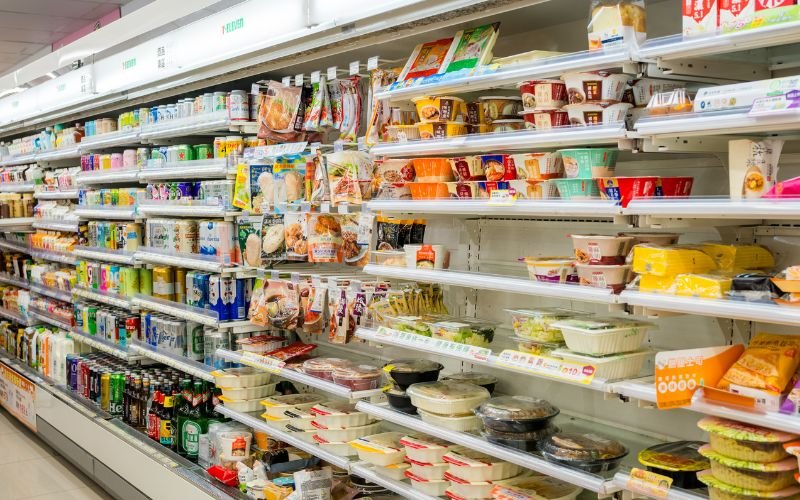1. Introduction & Core Concepts
Convenience stores play a vital role in retail. These stores shape how millions of Americans shop every single day, meeting their daily needs through carefully planned supply networks. The concept of convenience stores began in the early 1900s as small family shops. Over time, they grew into essential parts of our communities that serve both local neighborhoods and busy travelers.
Understanding Modern Supply Systems
Store owners work with many different suppliers to keep their shelves full. Getting products into convenience stores involves a complex network of companies and delivery systems that most customers never see. The store manager must keep track of hundreds of items and know exactly when to order more. Supply partners help stores maintain the right mix of products that customers want to buy.
Finding good suppliers is key to running a successful store. Local distributors bring fresh items like milk and bread to stores several times each week to make sure nothing runs out. Store owners spend a lot of time building relationships with their suppliers so they can get better prices and reliable service.
Every convenience store faces tough competition to stay profitable. The best stores carefully choose products that will sell quickly and bring customers back often. Smart ordering systems help track what’s selling and what needs to be restocked right away. Keeping the right amount of inventory is a daily challenge that requires constant attention.
Modern stores use computer systems to manage their inventory. They work with national brands and regional suppliers to keep popular items in stock at all times. These partnerships help stores get products quickly when they need them and keep prices reasonable for customers. Having strong supplier relationships means stores can handle busy times without running out of important items.

2. Key Supply Channels & Main Players
Convenience stores get their products from many different places. They work with big suppliers, smaller local companies, and sometimes buy directly from manufacturers to stock their shelves.
Where Products Come From
Most stores get their popular items like snacks and drinks from national brands. These partnerships with local suppliers help stores offer fresh items like produce and baked goods to customers in their area. The big national distributors supply about 70-80% of what you see in U.S. convenience stores.
Small local suppliers handle most of the remaining products in stores. A recent study found that 15% of convenience stores also use cash-and-carry outlets when they need items quickly. This mix of suppliers helps stores keep their shelves full.
Some stores are now working directly with manufacturers for certain products. This approach lets them get special items that other stores might not have. Stores can also save money by cutting out the middleman when buying directly from manufacturers. You can learn more about making these processes work better at Optimizing Your Convenience Store Supply Chain.
The main suppliers in this business include big national companies and smaller regional ones. Local suppliers can quickly deliver fresh items that people in the area want. The national companies offer reliable delivery of well-known brands at better prices.
Having different suppliers helps stores meet all their customers’ needs. This approach keeps costs down while making sure stores have both everyday items and special products that catch shoppers’ eyes. Working with various suppliers helps stores stay strong when market conditions change.

3. The Supply Chain Process & Logistics
The supply chain process in convenience stores moves products from makers to shelves. Through careful planning and smart delivery systems, stores can keep their shelves full and customers happy all year long.
The process starts with buying products. Convenience stores build strong relationships with suppliers and use computer programs to track what customers buy the most.
Managing the warehouse comes next, and it’s a big job that requires attention to detail. Products arrive at warehouses where workers check them, store them safely, and keep detailed records of everything that comes in and goes out.
Getting items from warehouses to stores is the next big step. Teams plan delivery routes carefully and often send trucks during quiet hours to avoid traffic.
Key Stages in Supply Chain Flow
• Procurement and Order Placement
• Warehousing and Inventory Receipt
• Quality Control and Cataloging
• Route Planning and Distribution Scheduling
• Final Delivery to Individual Stores
For additional clarity, consider the supply chain flow chart below:
| Stage | Key Activities | Impact on Efficiency |
|---|---|---|
| Procurement | Supplier selection, order negotiation | Secures competitive pricing and product variety |
| Warehousing | Receiving, storage, inventory tracking | Minimizes waste and ensures product freshness |
| Quality Control | Inspection and compliance checks | Maintains brand integrity and customer trust |
| Distribution Logistics | Transport coordination, route optimization | Reduces lead times and lowers delivery costs |
| Final Store Delivery | Scheduling, on-time replenishment | Enhances customer satisfaction and operational flow |
Technology helps track everything in the supply chain. Small computer devices show store managers what’s selling and when to order more products.
A good supply chain works like a well-oiled machine, with each part doing its job at the right time. When stores get this right, they keep their customers happy and make more money.
Working together, all these parts help stores stay stocked with what customers want. This careful planning means shoppers can always find what they need when they visit the store.
4. Original Insights & Unique Strategies
Convenience stores now use data to get better deals from suppliers. Their managers are completely changing how they order and stock products, moving away from old methods that have been used for decades. Digital tools help stores predict what customers will buy and track everything on the shelves in real time.
Technology-Driven Changes
Big store chains use data to watch what sells best. By looking at sales numbers hour by hour and week by week, stores can work out better delivery times with suppliers and get cheaper prices for buying in bulk. Studies show that stores using these new methods waste 15% less inventory and make 3-5% more profit.
Many stores are starting to use special ordering websites to work with suppliers. These websites let stores quickly compare prices and set up automatic orders, which saves a lot of time. One chain of medium-sized stores got a 7% discount on popular items just by using this system.
Store owners are building relationships with both local makers and big companies. Working with different suppliers helps stores keep products in stock even when there are delivery problems somewhere else. Our work shows that having both local and national brands helps keep prices steady.
Smart store owners should get systems that help track supplier deals. These tools can show you when prices change and tell you the best time to buy things. More stores are also using new technology called blockchain to keep track of their supplies, which helps build trust with suppliers.
The future of convenience stores depends on using technology and building good relationships with suppliers. This approach helps stores save money and work better with suppliers in today’s competitive market.
Sourcing in Convenience Stores
Running a convenience store comes with many supply challenges. These problems affect how stores get their products and make money in a big way. Small orders mean stores have less power when buying from suppliers. This situation makes each item cost more than it would for bigger stores.
Key Challenges and Solutions
Pricing is a huge issue for convenience stores. Their smaller orders don’t qualify for the big discounts that larger stores get. Many stores must keep popular brands while trying out new products from different suppliers. Quick inventory turnover leaves little time to bargain for better prices.
The rise of store brands offers new hope. Stores are making their own products to cut costs and stand out from other stores. Working with local suppliers has also helped many stores do better. This approach makes getting products easier and helps stores offer items that local customers want.
Technology is changing how stores get their products. Smart computer systems help stores know what to order and when. Store owners can now place orders and check inventory with just a few clicks. These new tools are making everything work better.
Here’s what successful stores are doing:
- Working with different suppliers
- Using modern inventory systems
- Making deals that work when order sizes change
- Creating their own brand products
- Buying from local suppliers when possible
Moving forward, stores must balance these challenges with new opportunities. The future looks bright for stores that can adapt to changes quickly. Small changes today can lead to bigger success tomorrow.
For more in-depth guidance, check out Where Do Convenience Stores Buy Wholesale Their Products.
6. Conclusion & Actionable Takeaways
Convenience stores rely on many different suppliers to get their products. Each store must work with wholesalers, distributors, and companies that make products directly to keep their shelves full. Through this guide, we’ve broken down exactly how convenience stores get everything they need to serve customers well. Running a store means managing partners carefully and staying on top of new ways to do business.
Key Learnings:
• Stores buy from big national brands and local suppliers to meet customer needs. Getting goods from both helps stores adapt quickly when shoppers want different things.
• Supply chains work best when store owners make good deals with suppliers, restock at the right times, and keep strong ties with many different suppliers. These connections take work but pay off.
• Private label items and new technology are changing how stores get their products.
Action Steps:
- Look at Your Suppliers: Check if your current mix of wholesalers, manufacturers, and local vendors works well. Use numbers and real examples from successful stores to see if you’re getting the best deals.
- Get Better at Making Deals: Look at what you’ve bought before and what things cost now to get better prices. Building relationships that last can help you know what to expect and save money.
- Use New Technology: Get tools that help track inventory and order automatically. Modern systems can help predict what you’ll need and keep your shelves full without spending too much money.
- Watch What’s New: Keep up with changes in how stores get their products. Check resources like Optimizing Your Convenience Store Supply Chain and Where Do Convenience Stores Buy Wholesale Their Products.
- Always Try to Do Better:
- Check how well suppliers are doing
- Follow all rules about getting products
- See if prices are fair compared to others
- Talk often with important suppliers
- Be Ready for Problems: Have backup plans and know different suppliers you can call if something goes wrong.
Store owners can do better when they use these tips. The way stores get their products keeps changing as markets change and new ideas come up. Using these steps can help make your store run better and make more money. Smart planning and good partnerships help stores stay successful.
FAQs
How do convenience stores choose their suppliers?
Stores typically work with both national distributors and local suppliers, with national distributors providing 70-80% of inventory and local suppliers handling specialty items.
What are the main challenges in convenience store supply chains?
Key challenges include limited buying power, higher per-unit costs due to smaller orders, quick inventory turnover, and maintaining consistent stock levels.
How can technology improve convenience store supply management?
Modern technology helps with automated ordering, real-time inventory tracking, sales prediction, and supplier relationship management, reducing waste by up to 15%.
What percentage of convenience stores use cash-and-carry outlets?
Approximately 15% of convenience stores utilize cash-and-carry outlets for quick inventory replenishment.
How can convenience stores improve their profit margins?
Stores can increase profits by developing private labels, utilizing data analytics, building strong supplier relationships, and implementing modern inventory management systems.



